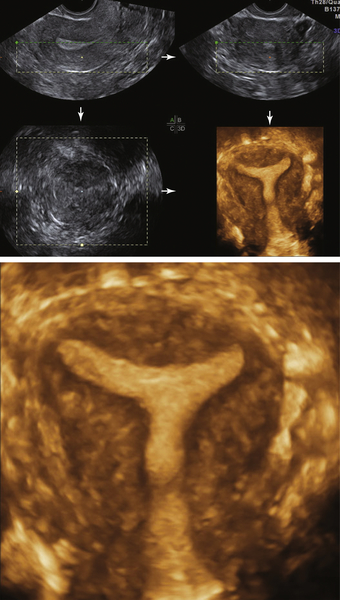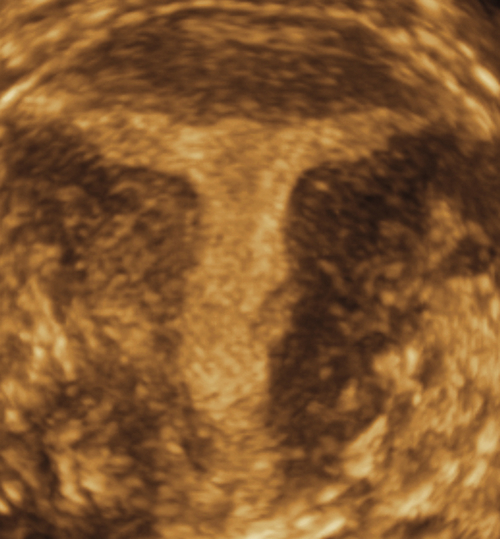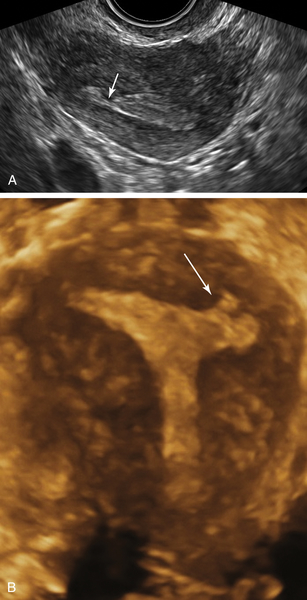T-Shaped Uterus
Synonyms/Description
Etiology
Ultrasound Findings
Differential Diagnosis
Clinical Aspects and Recommendations
Figures

Figure T1-1 3-D image of a T-shaped uterus in a patient with recurrent miscarriage. Note the lack of triangular shape of the lateral walls of the endometrial cavity. Instead, the lateral walls are pulled inward to create a T configuration, thus narrowing the cavity. The outer uterine surface, however, is normally shaped, as is expected with this diagnosis.
Suggested Reading
Fernandez H., Garbin O., Castaigne V., Gervaise A., Levaillant J.M. Surgical approach to and reproductive outcome after surgical correction of a T-shaped uterus. Hum Reprod. 2011;26(7):1730–1734.
Katz Z., Ben-Arie A., Lurie S., Manor M., Insler V. Beneficial effect of hysteroscopic metroplasty on the reproductive outcome in a ‘T-shaped’ uterus. Gynecol Obstet Invest. 1996;41(1):41–43.
van Gils A.P., Tham R.T., Falke T.H., Peters A.A. Abnormalities of the uterus and cervix after diethylstilbestrol exposure: correlation of findings on MR and hysterosalpingography. AJR Am J Roentgenol. 1989;153(6):1235–1238.









